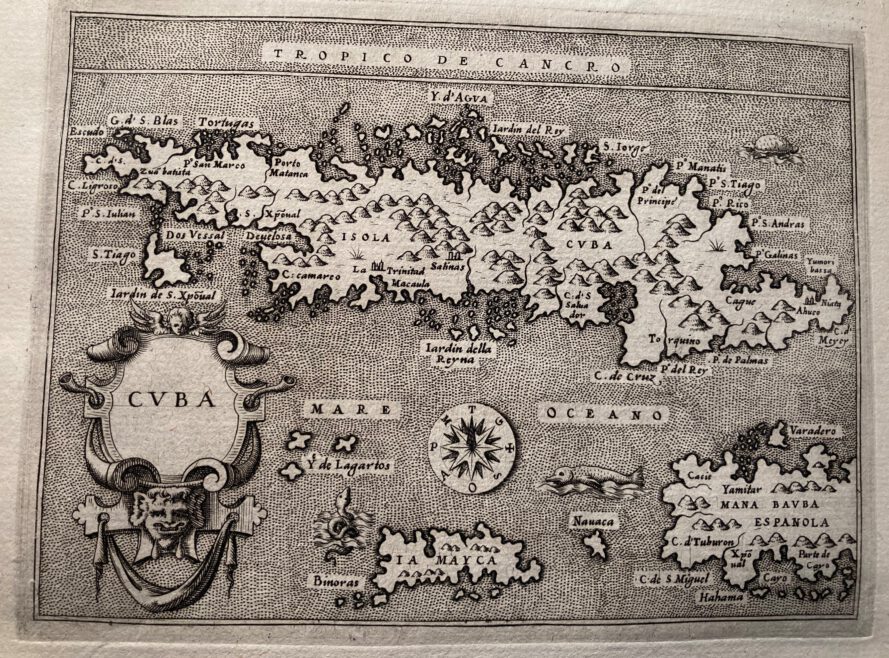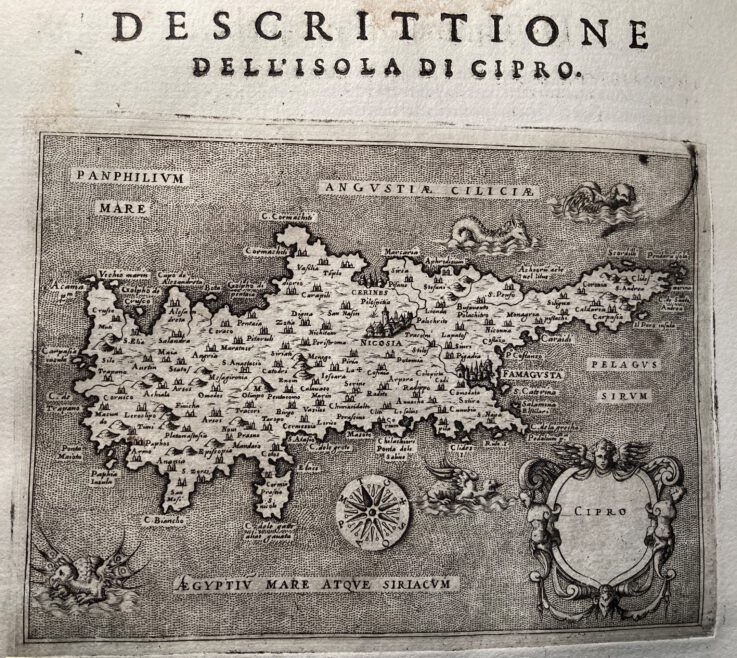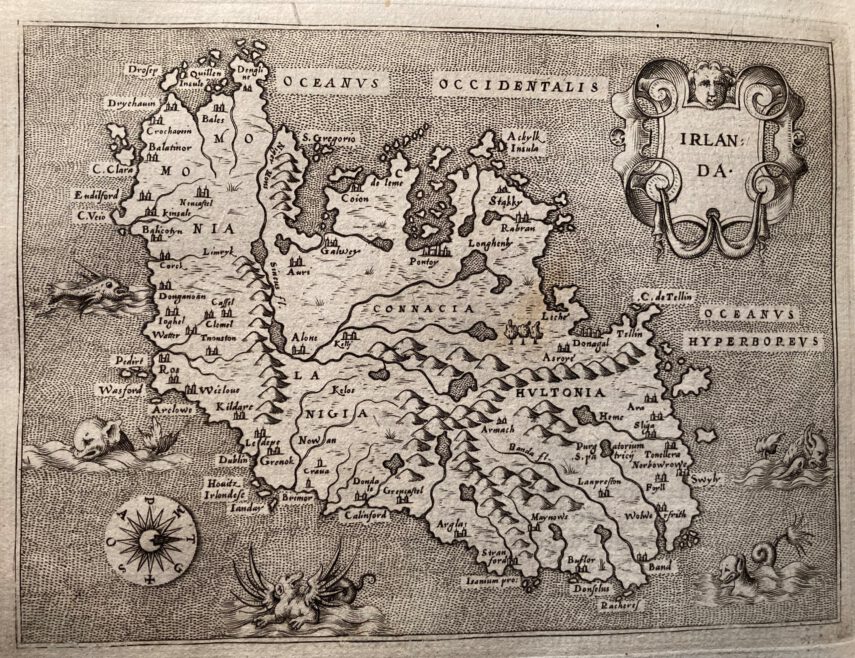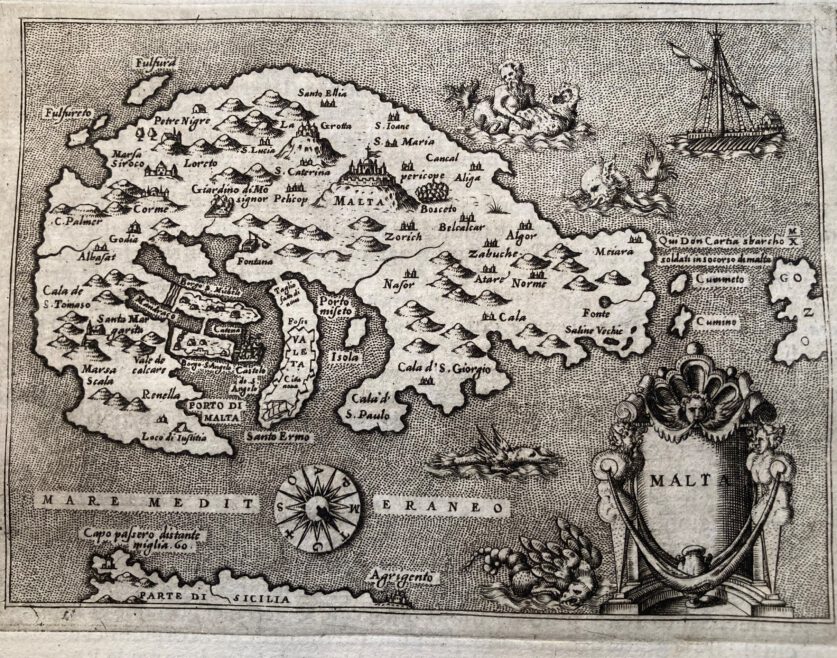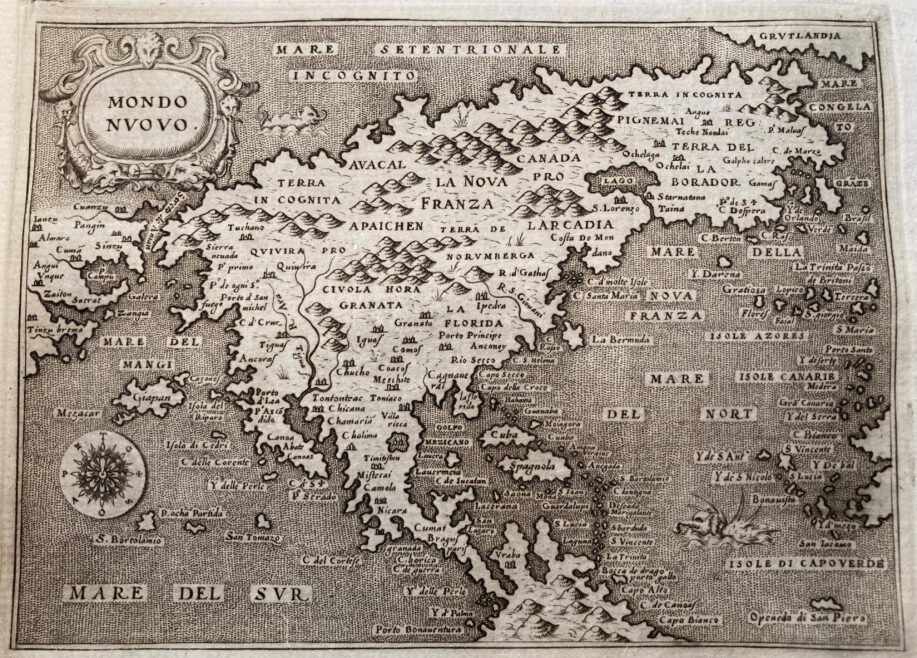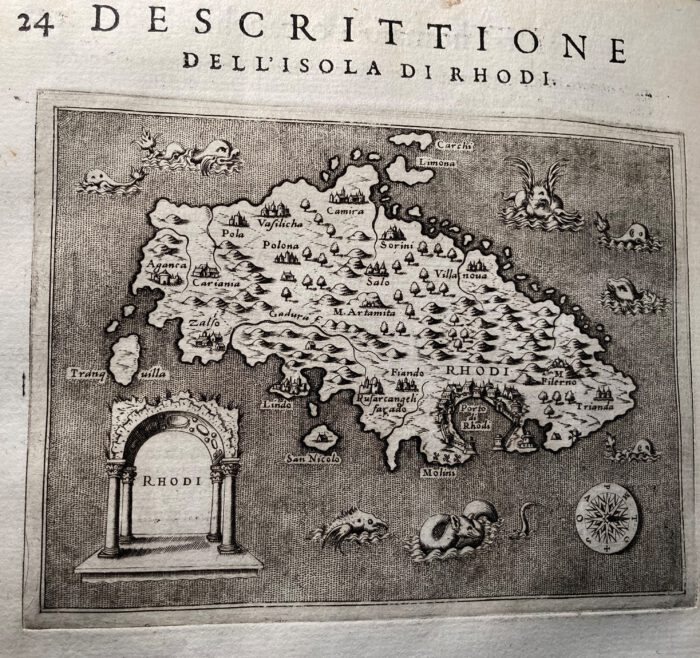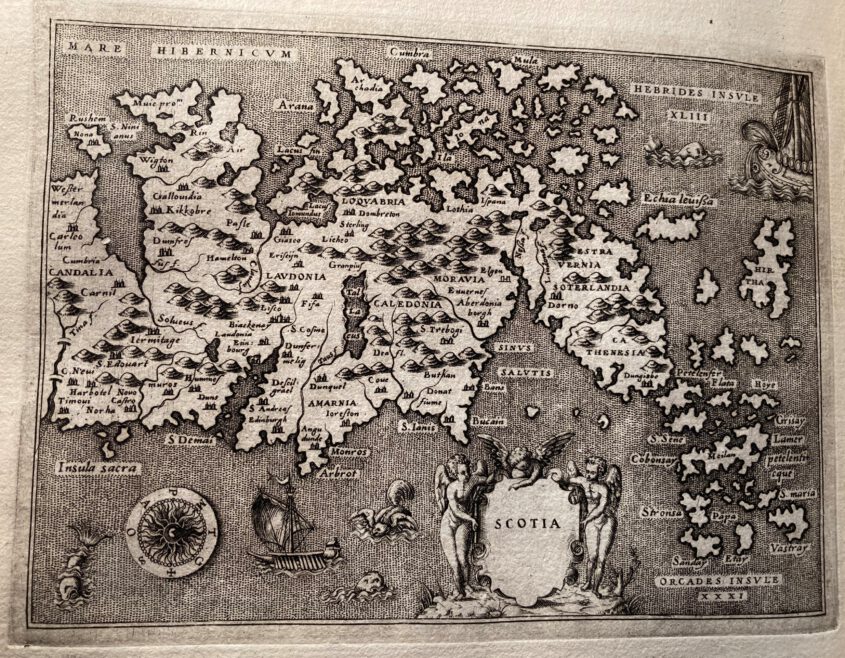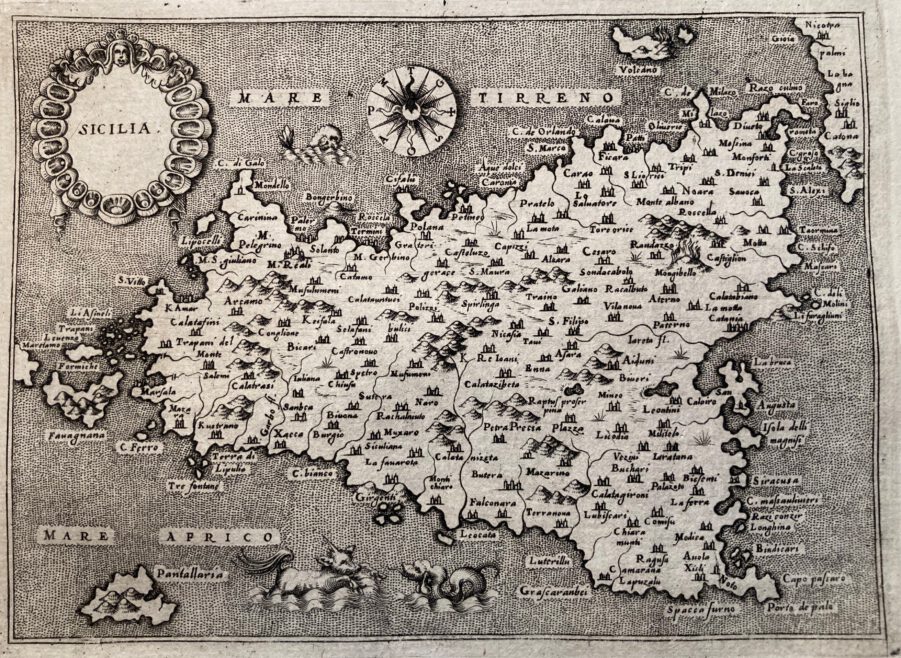On World Book Day 2022, it seems fitting to explore one of the gems from our historic library, a 16th century book of maps and geography.

L’isole piu famose del Mondo (The most famous islands of the world) is, as its title indicates, a book on islands from around the globe, enriched with several maps. It is part of the isolario (‘book of islands’) genre, where maps are presented alongside a narrative description of the location, sometimes with historical information.
Librarians often use different databases – such as WorldCat – to find out about other copies of a book and compare them to the one they have. These databases allow us to see where copies are held, when they were published, in which language, and by whom. In the case of L’isole, most recorded copies are in Italian and published between 1572 and 1686. This tells us two things: that our copy, dated 1572, is an example of the first edition (thus celebrating a whopping 450 years of existence this year), and that it was popular enough to be reprinted.
Looking at the records for these later editions, we can learn that the book was not just reprinted but that it was edited - which means that the content of the work was changed. A visible example of this is the number of maps, or plates, recorded. Our own copy counts 30, the third edition (1590) has 46 or 47 maps depending on the record, and the 1602 edition seems to have 48 maps.
Who was involved in creating this book?

The title page of an early printed book might list several names. The first, and most obvious one, is that of the author. In this case, it is Italian scholar and polymath Tommaso Porcacchi (1530-1576). Porcacchi started as a translator, working specifically on Roman and Ancient Greek historians. The second edition of l’isole was the last of his works published when he was alive, but new versions continued to be edited until the late 17th century.

Next, the title page provides us with the name of the artist who engraved the illustrations for the book, Girolamo Porro. His lengthy career lasted from approximately 1535 to 1576, with the second edition of L’isole also being his last recorded work. He was an experienced engraver able to (allegedly) use both wood and copper. These two materials were the most commonly used in printing illustrations at the time. This isolario used copperplates, allowing Porro to achieve much greater detail and crispness of line than he would have been able to with a woodcut.

Even with the invention of the printing press and the spread of movable types (individual movable pieces, each with a single letter, which could be put together in a press to create a text), book production was expensive, especially if you required illustrations (or maps, in this case). It was not rare for the author to dedicate the book to a powerful protector who had provided financial help, or ‘patronage’. It might also be dedicated to a significant figure for political or cultural reasons. On the title page, we can see that L’isole was dedicated to a ’Don Giovanni d’Austria’. This refers to John of Austria, son of Holy Roman Emperor Charles V, and admiral of the Holy League’s fleet at the Battle of Lepanto, one of the major confrontations of the fourth Ottoman-Venetian War (where there were also three Hospitallers’ galleys led by Pietro Giustiniani). We can guess that this dedication was, therefore, a political choice. The war mostly concerned the control of the island of Cyprus, and was still on-going at the time of the book’s publication in Venice.
Owners too left their mark. On the title page, we can see a very faint signature reading ‘Vitaliano Visconte’ – which is where the detective work truly begins. ‘Visconte’ could be the equivalent of the noble title ‘Viscount’; however, we have no accompanying place name, meaning that it is more likely to be a family name. Visconte is rare, but it was sometimes used by members of the Milanese Visconti family. We know of at least two Vitaliano Viscontis: the Archbishop of Hadrianopolis, Vitaliano Visconti Borromeo (1591-1617), and Cardinal Vitaliano Visconti (1618-1671). Which one is more likely? It is difficult to tell – examples of the Archbishop’s signature are available online, but all look different from our version. It is also possible that neither of these known Vitaliano Viscontis is the former owner.

We can now write, share, and enjoy books in ways that none of the people involved in L’isole piu famose del Mondo could have ever imagined. Who knows what people will be able to tell about us from our own books five hundred years from now?



